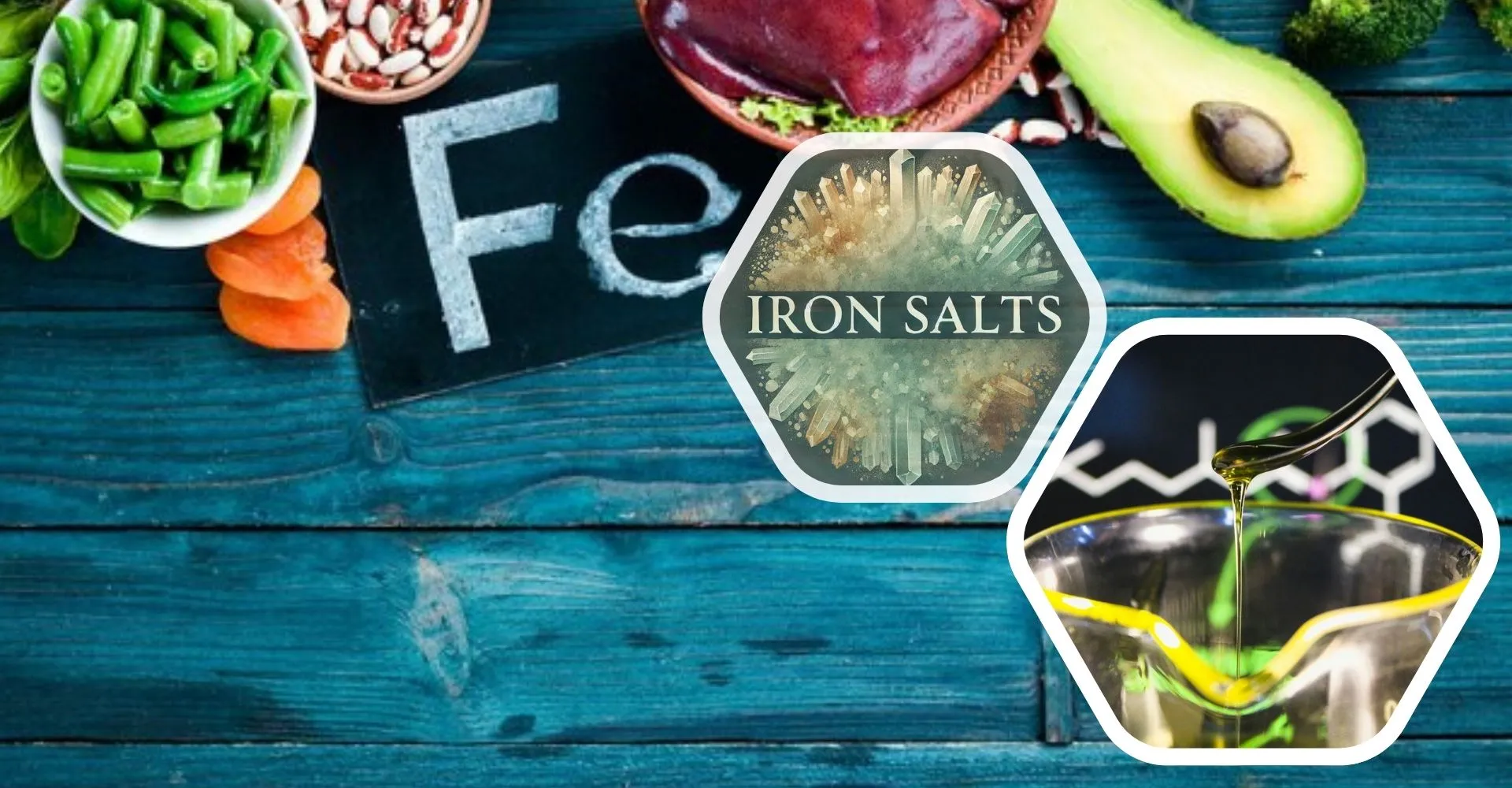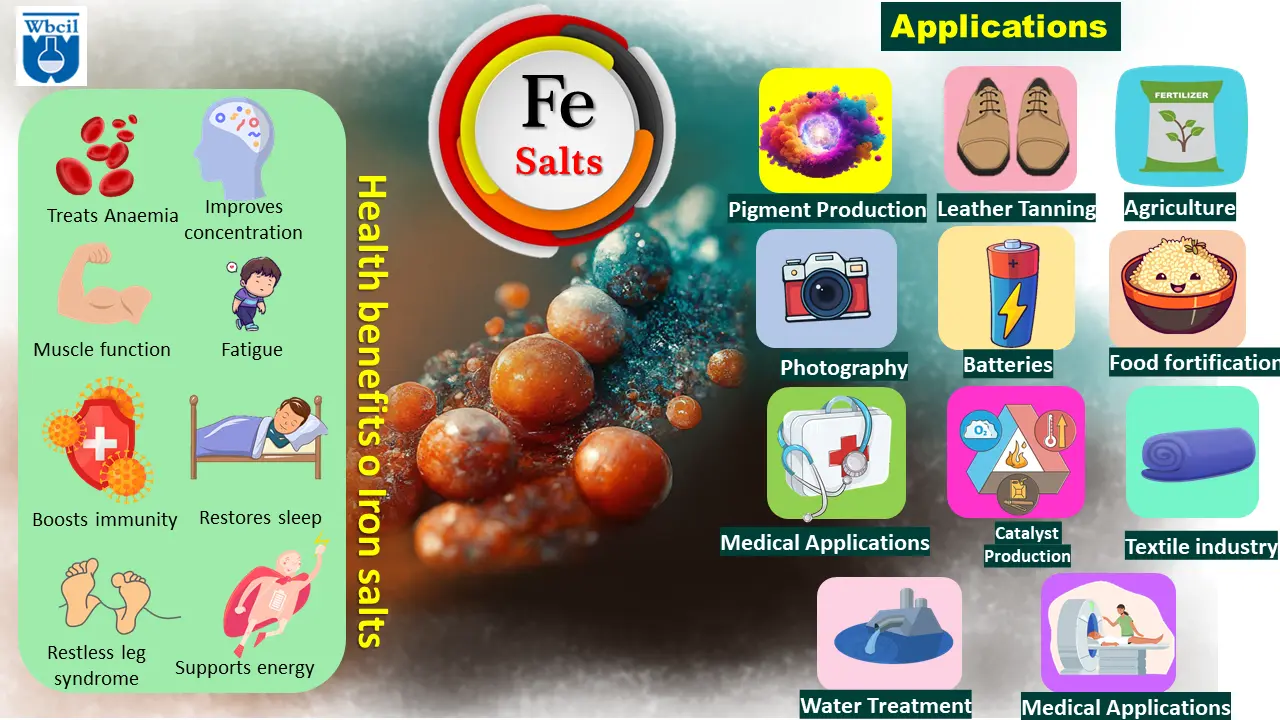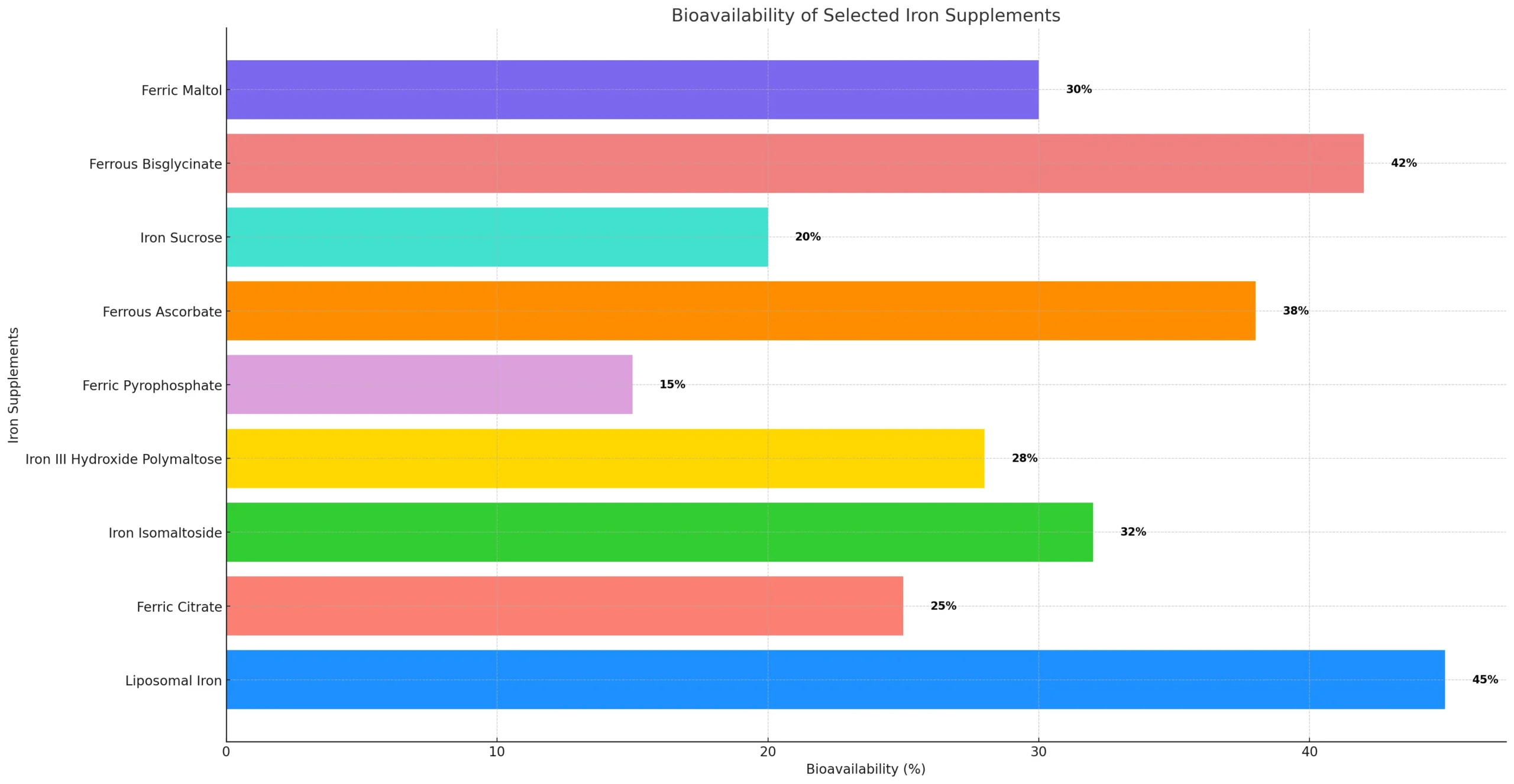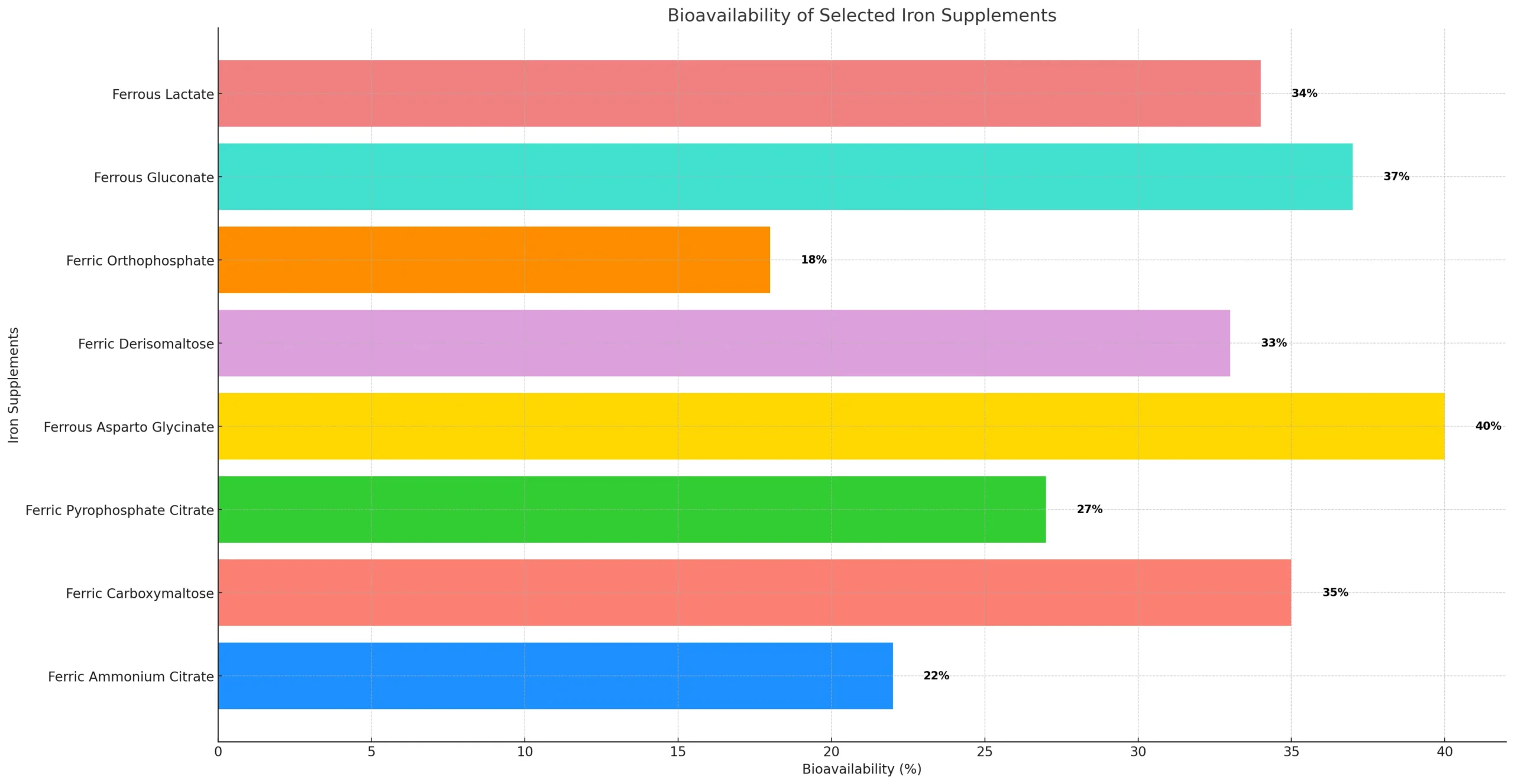Worried about Iron Deficiency? Explore Our Advanced Bioavailable Iron Salts
Iron, an essential mineral and Iron salts, the backbone of iron supplementation, plays a pivotal role in oxygen transport, energy production, and immune function. Iron deficiency anaemia, a global health concern, affects millions worldwide, especially women, children, and pregnant individuals.
Iron salts differ in bioavailability—the rate and extent to which iron is absorbed into the bloodstream. WBCIL (company name), a pioneer in iron supplementation, offers a range of iron salts, each with unique properties.
Understanding Iron Bioavailability
Iron absorption is influenced by factors such as dietary components, gut pH, and the type of iron salt. Bioavailability is crucial as it determines the efficacy of an iron supplement. Higher bioavailability translates to better iron absorption and quicker relief from iron deficiency.

WBCIL provides various iron salts to cater to diverse patient needs:
Iron, an essential mineral, plays a pivotal role in oxygen transport, energy production, and immune function. Iron deficiency anaemia, a global health concern, affects millions worldwide, especially women, children, and pregnant individuals. Iron salts, the backbone of iron supplementation, differ in bioavailability—the rate and extent to which iron is absorbed into the bloodstream. WBCIL (company name), a pioneer in iron supplementation, offers a range of iron salts, each with unique properties.

Types of Iron Salts Available at WBCIL
WBCIL provides various iron salts to cater to diverse patient needs:
| Iron Salt | Formula | CAS No. | Synonyms | Bioavailability | Uses in Industry |
| Liposomal Iron | Varies | 10058-44-3 | N/A | High | Supplements, pharmaceuticals |
| Ferric Citrate | C6H5FeO7 | 2338-05-8 | Ferric Trisodium Citrate | Moderate | CKD management, anemia treatment |
| Iron Isomaltoside | Varies | 1370654-58-2 | N/A | High | Intravenous iron therapy |
| Iron III Hydroxide Polymaltose | (C6H4FeO8)n | 9007-72-1 | Ferric Hydroxide Polymaltose Complex | Good | Oral iron supplements |
| Ferric Pyrophosphate | Fe4(P2O7)3 | 10058-44-3 | Iron(III) Pyrophosphate | Relatively High | Food fortification |
| Ferrous Ascorbate | C12H14FeO12 | 24808-52-4 | Ferrous Salt of Ascorbic Acid | High | Oral supplements, pharmaceuticals |
| Iron Sucrose | C12H29Fe5Na2O23 | 8047-67-4 | Iron Sucrose Injection | High | IV treatments for CKD |
| Ferrous Bisglycinate | C24H44FeO25 | 20150-34-9 | Ferrous Bisglycinate Chelate | Excellent | Dietary supplements |
| Ferric Maltol | C18H15FeO12 | 14484-47-0 | Ferric Trimaltol | Moderate | Oral formulations |
| Ferric Ammonium Citrate | C6H8FeNO7 | 1185-57-5 | Ferric Ammonium Citrate | Moderate | Food fortification, supplements |
| Ferric Carboxymaltose | C14H28FeO18 | 9007-72-1 | Ferric Carboxymaltose Injection | High | IV iron repletion |
| Ferric Pyrophosphate Citrate | C6H5FeN2O7 | 1255-67-1 | Ferric Pyrophosphate Soluble | High | Dialysis patients |
| Ferrous Asparto Glycinate | C6H14FeN2O8 | 18488-81-4 | Ferrous Glycinate Aspartate | High | Dietary supplements |
| Ferric Derisomaltose | C6H12FeN2O8 | 104063-53-6 | Iron Derisomaltose | High | Intravenous iron therapy |
| Ferric Orthophosphate | FePO4 | 10045-86-0 | Ferric Phosphate | Moderate | Food fortification |
| Ferrous Gluconate | C12H22FeO14 | 299-29-6 | Ferrous D-Gluconate | Good | Oral iron supplements |
| Ferrous Lactate | C6H10FeO6 | 5905-52-2 | Ferrous (II) Lactate | Moderate | Supplements, food fortification |
Oral vs. Intravenous Iron Supplements
While oral iron salts are convenient, intravenous iron is reserved for severe iron deficiency or malabsorption cases. Intravenous iron offers rapid iron replenishment but requires medical supervision.
Recent Research and Developments at WBCIL
WBCIL’s research into iron salts is likely centered on addressing the challenges associated with traditional iron supplementation. This could involve developing novel iron delivery systems to improve absorption and reduce gastrointestinal side effects, or exploring the combination of iron with other essential nutrients to create comprehensive healthcare solutions. By focusing on patient-centric innovation, WBCIL may be striving to optimize iron supplementation for diverse populations, including those with specific nutritional needs.
Comparative analysis of the bioavailability of the listed iron salts:
Liposomal Iron: Liposomal encapsulation enhances iron absorption by protecting it from digestive degradation, leading to high bioavailability. This method allows iron to bypass the stomach and be absorbed directly in the intestines.
Ferric Citrate: This compound is moderately bioavailable and is often used in patients with chronic kidney disease to manage anemia and hyperphosphatemia. It releases iron slowly, which can be beneficial for sustained absorption.
Iron Isomaltoside: Known for its high bioavailability, iron isomaltoside is commonly used in intravenous formulations. It has a stable structure that allows for controlled release of iron, making it effective for rapid repletion of iron stores.
Iron III Hydroxide Polymaltose: This complex has good bioavailability and is less likely to cause gastrointestinal side effects compared to ferrous salts. It is often used in oral formulations for treating iron deficiency.
Ferric Pyrophosphate: This compound is typically used in food fortification due to its stability and relatively high bioavailability. It is particularly effective when combined with enhancers like ascorbic acid.
Ferrous Ascorbate: Combining ferrous iron with ascorbic acid (vitamin C) significantly enhances its bioavailability. The ascorbate form is highly soluble and well-absorbed in the intestines.
Iron Sucrose: Widely used in intravenous treatments, iron sucrose has high bioavailability and is effective in rapidly correcting iron deficiency anemia, especially in patients with chronic kidney disease.
Ferrous Bisglycinate: This chelated form of iron is known for its excellent bioavailability and minimal gastrointestinal side effects. The bisglycinate complex is well-absorbed in the intestines.
Ferric Maltol: This compound has moderate bioavailability and is often used in oral formulations. It is known for being gentle on the stomach, which improves patient compliance.
Ferric Ammonium Citrate: This iron salt is used in food fortification and supplements. It has moderate bioavailability and is effective when consumed with meals.
Ferric Carboxymaltose: This intravenous iron preparation has high bioavailability and is used for rapid iron repletion. It releases iron slowly, reducing the risk of oxidative stress.
Ferric Pyrophosphate Citrate: Used primarily in dialysis patients, this compound is highly bioavailable when administered intravenously. It is stable and releases iron in a controlled manner.
Ferrous Asparto Glycinate: This chelated form of iron has high bioavailability and is gentle on the gastrointestinal tract. It is often used in dietary supplements.
Ferric Derisomaltose: Similar to iron isomaltoside, this compound has high bioavailability and is used in intravenous formulations. It provides a controlled release of iron, ensuring effective absorption.
Ferric Orthophosphate: This compound has moderate bioavailability and is commonly used in food fortification. It is stable and effective when consumed with dietary enhancers.
Ferrous Gluconate: Known for its good bioavailability, ferrous gluconate is often used in oral iron supplements. It is well-absorbed and less likely to cause constipation compared to other ferrous salts.
Ferrous Lactate: This iron salt has moderate bioavailability and is used in both supplements and food fortification. It is relatively well-tolerated and effective in improving iron status.


WBCIL Holds Iron API Patents and its USP
WBCIL’s extensive knowledge in developing iron formulations is clearly demonstrated through their ownership of patents for a variety of iron active pharmaceutical ingredients (APIs). Their innovative approach to iron delivery distinguishes them in the marketplace. WBCIL’s patent portfolio includes Ferric Carboxymaltose, Iron-Isomaltoside, Iron (III) Coordination Complex, Ferric Derisomaltose, Ferric Citrate, Sucroferric Oxyhydroxide, highlighting their comprehensive expertise in iron compound technology.
Guidelines for Choosing the Right Iron Supplement
Selecting the best iron supplement depends on factors like the severity of iron deficiency, underlying health conditions, and individual tolerance. Consulting a healthcare professional is essential for personalized recommendations.
Tips for Enhancing Iron Absorption
- Consume iron-rich foods like lean meat, poultry, fish, beans, and fortified cereals.
- Pair iron-rich foods with vitamin C sources (citrus fruits, tomatoes) to enhance absorption.
- Avoid consuming coffee or tea with meals as they inhibit iron absorption.
Conclusion
Iron salts play a vital role in managing iron deficiency. Understanding the bioavailability of different iron salts is crucial for selecting the most effective supplement. WBCIL’s commitment to research and innovation has led to the development of advanced iron formulations like liposomal iron. By combining the right iron supplement with dietary adjustments, individuals can effectively address iron deficiency and improve overall health.
1. https://www.sciencedirect.com/topics/pharmacology-toxicology-and-pharmaceutical-science/iron-salt
2. https://www.sciencedirect.com/topics/nursing-and-health-professions/iron-salt
3. Wikipedia contributors. Iron supplement. Wikipedia, The Free Encyclopedia. June 21, 2024, 21:07 UTC. Available at: https://en.wikipedia.org/w/index.php?title=Iron_supplement&oldid=1230289032. Accessed August 5, 2024.
4. https://livogen.in/which-iron-salt-is-better
5. Singhal S R, Kadian V, Singh S, Ghalaut V S, Comparison of Various Oral Iron Salts in the Treatment of Iron Deficiency Anemia in Pregnancy. Indian J Obstet Gynecol Res 2015;2(3):155-158. https://www.ijogr.org/journal-article-file/769
6. https://elsevier.health/en-US/preview/iron-salts
7. https://www.acgih.org/iron-salts-soluble/
8. Nguyen M, Tadi P. Iron Supplementation. [Updated 2023 Jul 3]. In: StatPearls [Internet]. Treasure Island (FL): StatPearls Publishing; 2024 Jan-. Available from: https://www.ncbi.nlm.nih.gov/books/NBK557376/
9. https://www.osha.gov/chemicaldata/499
10. Drugs and Lactation Database (LactMed®) [Internet]. Bethesda (MD): National Institute of Child Health and Human Development; 2006-. Iron Salts. [Updated 2024 Jan 15]. Available from: https://www.ncbi.nlm.nih.gov/books/NBK575923/
11. Stroek, W. and Hoareau, L. and Albrecht, From the bottle: simple iron salts for the efficient synthesis of pyrrolidines via catalytic C–H bond amination, Catal. Sci. Technol., 2023,13, 958-962. https://pubs.rsc.org/en/content/articlelanding/2023/cy/d2cy02065c
12. https://www.cdc.gov/niosh/npg/npgd0346.html
13. https://medicalguidelines.msf.org/en/viewport/EssDr/english/ferrous-salts-16683659.html
14. Tarczykowska A, Engström N, Dobermann D, Powell J, Scheers N. Differential Effects of Iron Chelates vs. Iron Salts on Induction of Pro-Oncogenic Amphiregulin and Pro-Inflammatory COX-2 in Human Intestinal Adenocarcinoma Cell Lines. International Journal of Molecular Sciences. 2023; 24(6):5507. https://doi.org/10.3390/ijms24065507
15. https://www.britannica.com/science/iron-salt
